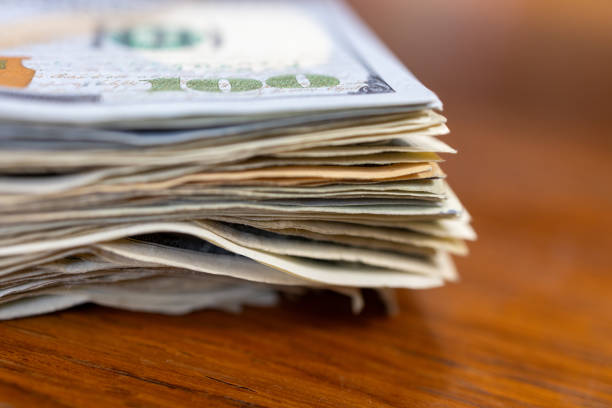 The intricate relationship between overextended personal debt and credit utilization reveals a critical, yet often overlooked, mechanism of financial distress. Credit utilization—the ratio of your outstanding credit card balances to your total available credit limits—is far more than a mere metric; it is a primary determinant of your credit score and a powerful indicator of financial health. When personal debt becomes overextended, this ratio invariably skyrockets, triggering a cascade of negative consequences that can solidify a borrower's precarious position and hinder any potential recovery.High credit utilization signals to lenders and credit scoring algorithms that an individual is overly reliant on revolving credit, which is interpreted as a significant risk factor. This single element can account for nearly a third of a FICO score, meaning that maxing out credit cards can cause a credit score to plummet dramatically. The immediate effect is a degradation of financial flexibility. The individual finds themselves locked out of access to new, affordable credit, such as a lower-interest consolidation loan or a new card with a balance transfer offer that could provide relief. They are effectively stranded with their high-interest debt.Furthermore, this damaging score drop often triggers a punitive response from existing creditors themselves through a process called "credit line decrease." Risk departments at lending institutions, noting the high utilization and falling score, may proactively slash the borrower’s available credit limits. This action, intended to mitigate the bank’s exposure, paradoxically worsens the individual’s crisis by further inflating their utilization percentage, which in turn causes another score drop—a vicious cycle that is difficult to break.Thus, high credit utilization acts as both a symptom and a cause of financial trouble. It is the glaring sign of overextension that simultaneously slams shut the very doors needed for escape. It transforms credit cards from a tool of convenience into a gilded cage of high-interest obligations, where every payment feels futile against accumulating finance charges. Rebuilding requires not just paying down balances, but strategically managing this ratio to repair the credit reputation, a painstaking process that underscores how deeply the technicalities of credit management are entwined with the profound struggle of debt itself.
The intricate relationship between overextended personal debt and credit utilization reveals a critical, yet often overlooked, mechanism of financial distress. Credit utilization—the ratio of your outstanding credit card balances to your total available credit limits—is far more than a mere metric; it is a primary determinant of your credit score and a powerful indicator of financial health. When personal debt becomes overextended, this ratio invariably skyrockets, triggering a cascade of negative consequences that can solidify a borrower's precarious position and hinder any potential recovery.High credit utilization signals to lenders and credit scoring algorithms that an individual is overly reliant on revolving credit, which is interpreted as a significant risk factor. This single element can account for nearly a third of a FICO score, meaning that maxing out credit cards can cause a credit score to plummet dramatically. The immediate effect is a degradation of financial flexibility. The individual finds themselves locked out of access to new, affordable credit, such as a lower-interest consolidation loan or a new card with a balance transfer offer that could provide relief. They are effectively stranded with their high-interest debt.Furthermore, this damaging score drop often triggers a punitive response from existing creditors themselves through a process called "credit line decrease." Risk departments at lending institutions, noting the high utilization and falling score, may proactively slash the borrower’s available credit limits. This action, intended to mitigate the bank’s exposure, paradoxically worsens the individual’s crisis by further inflating their utilization percentage, which in turn causes another score drop—a vicious cycle that is difficult to break.Thus, high credit utilization acts as both a symptom and a cause of financial trouble. It is the glaring sign of overextension that simultaneously slams shut the very doors needed for escape. It transforms credit cards from a tool of convenience into a gilded cage of high-interest obligations, where every payment feels futile against accumulating finance charges. Rebuilding requires not just paying down balances, but strategically managing this ratio to repair the credit reputation, a painstaking process that underscores how deeply the technicalities of credit management are entwined with the profound struggle of debt itself.
Home equity (the market value of your home minus what you owe) can be a source of funds through a Home Equity Loan or Line of Credit (HELOC). However, using this equity to pay off unsecured debt is risky because it converts unsecured debt into secured debt—now your home is on the line if you can't pay.
Bankruptcy is a last-resort legal option for when debt is truly insurmountable. It has long-lasting, severe consequences for your creditworthiness but can provide relief from overwhelming debt through either liquidation (Chapter 7) or a repayment plan (Chapter 13).
Your self-worth is not defined by your net worth. Financial difficulties are a life circumstance, not a character flaw. Practicing self-compassion is essential for maintaining the mental strength needed to navigate the path to financial recovery.
As you spend more on housing, cars, and discretionary items, your monthly obligations increase. This raises your DTI, making it harder to qualify for loans and pushing you closer to the threshold of being overextended.
Absolutely. Financial flexibility is determined by the gap between your income and your obligations, not by income alone. A high income paired with excessive debt and lifestyle inflation can leave you just as financially rigid as someone with a low income.